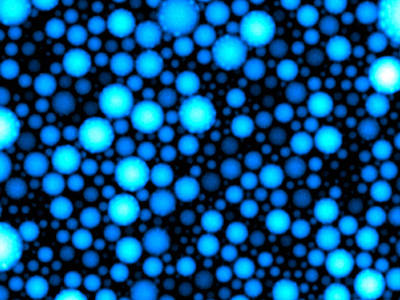A complex biochemical system in a droplet
In an effort to investigate the almost infinite number of complex and interlinked reactions taking place in a biological cell, scientists tried to replicate them in an artificial cell. Such experiments have so far worked with very simple reactions, but the team managed to establish a complex biochemical reaction in tiny droplets only a few micrometres in size.
The group was led by Professor Friedrich Simmel, chair of Systems Biophysics and Nano Biophysics at the Technische Universität München (TUM). He and his colleagues from the University of California Riverside and the California Institute of Technology have published their findings in the journal Nature Chemistry.

The experiment was conducted using a biochemical oscillator made with a mixture of DNA, RNA and proteins. After an aqueous reaction solution and oil mixture was added, the liquid was vigorously shaken to create an emulsion consisting of thousands of droplets. Each droplet contained a copy of the oscillator mixture, enabling the scientists to quickly and cheaply set up a large number of experiments simultaneously.
The oscillator involves several reactions with DNA and RNA, which take place repetitively one after the other. Their rhythm becomes visible because two DNA strands bind to each other in such a way that a fluorescent dye shines. This ‘blinking’ was recorded and studied under a microscope.
Professor Simmel and his colleagues intended to investigate the behaviour of a complex reaction system if scaled down to the size of a cell. In addition, they wondered if all droplet systems displayed identical behaviour and what factors would cause possible differences.
Their experiments showed that the oscillations in the individual droplets differed strongly - more strongly than might have been expected from a simple statistical model, with small drops displaying stronger variations than large ones. According to Professor Simmel, it is “surprising that we could witness a similar variability and individuality in a comparatively simple chemical system as is known from biological cells”.
“Simultaneous measurement of large populations of droplets reveals major variations in the amplitude, frequency and damping of the oscillations,” the researchers said. “Variability increases for smaller droplets and depends on the operating point of the oscillator … [This] can be attributed to the statistical variation of reactant concentrations created during their partitioning into droplets.”
It is thus not currently possible to realise systems which are absolutely identical, which means researchers have to either search for ways to correct these variations or factor them in from the start. On the other hand, the numerous slightly differing systems could also be used specifically to pick out the one desired, optimally running set-up from thousands of systems.
“The highly parallel recording of the emulsion droplets enabled us to acquire plenty of interesting data,” said Professor Simmel. “Our goal is to use these data to review and improve the theoretical models of biochemical reaction networks at small molecule numbers.”
It is hoped that one day, single-cell systems could be used as ‘nanofactories’ for the production of complex organic substances or biomaterials.
Benchtop NMR used to assess heart disease risk
The breakthrough will enable more accessible, high-throughput cardiovascular disease (CVD) risk...
Activated gold helps visualise drug movement in the body
Gold nanoparticles are promising drug carriers for cancer therapy and targeted drug delivery, but...
Plasma-modified graphene enhances gas sensors
Researchers have improved gas-sensing technology by treating graphene sheets with plasma under...




